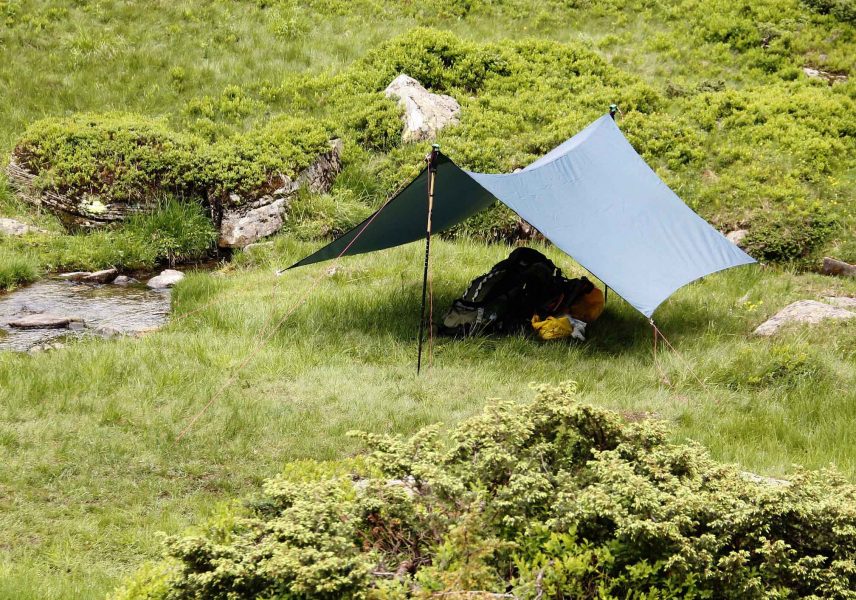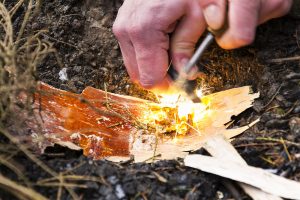
It’s late afternoon, and an emergency has forced you to spend an unintended, unprepared night in the back country. You hastily gather tinder and sticks for a fire and soon feel a rain drop on the back of your hand as you attempt to spark up a flame with your flint/steel fire kit. The wind picks up, and, before long, you’re being pelted by a chilling, penetrating downpour. Maybe you should have spent those first minutes building a shelter and then tackled the fire?
It’s an all-too-common reaction to what’s perceived in a survival situation to quickly rush to get a fire going — when, in fact, we should first be focusing on a dry, warm shelter so vital to warding off hypothermia.
Most survival steps are based upon sequential procedures and routines that are designed to help one prioritize the steps needed to survive an unexpected emergency. Having self-reliant skills is good; knowing the sequence in which to apply those life-saving skills is even better.
My training as a member of the Kodiak Island Search & Rescue unit grew from earlier training in programs originally adapted by the Alaska Marine Safety Institute that targeted both North Pacific commercial fishermen and as a training tool for U.S. Coast Guard personnel. The institute’s “Seven Steps to Survival” program provides a sequential list of procedures designed to help mitigate most emergency survival situations.
Like any list of priorities, it’s critical that each step is acknowledged and acted upon in the order presented. Most effective lists are meant be checked through as often as necessary — as conditions of both the environment and the individual/group changes.

Here are those seven steps for survival and why each one is a vital component in developing and using your survival sense:
Seven Steps to Survival
1. Know/Accept — Shock and disorientation may cause you to deny you are in trouble. Your best tool for survival is a Positive Mental Attitude. (PMA). You need to accept you are in serious trouble, activate your PMA and get your survival steps in motion.
2. Inventory/Assessment — Determine the status of (and treat) any injuries to yourself and others, you need to know what gear you have available, and you need to assess the resources around you that might be helpful. You also need to know the level of danger that may be presently or potentially harmful.
3. Shelter — Protect yourself from becoming hypothermic. An initial shelter may be the cavity in the root system of an overturned tree, or hastily-built lean-to stuffed with leaves and grass. You can always upgrade later. Ideally you may have enough in your group to prioritize shelter making while another starts and tends a fire, but make sure you have protective covering as a first priority.
4. Signal — Electronic devices are technical godsends — unless the batteries are dead or the signal is blocked. Creating ground-to-air signals via a trio of blazing/smoking fires, waving makeshift flags or marking the ground in a huge “X” may be seen by passing aircraft even before SAR teams are deployed. To be effectively seen from above, each leg/arm of a ground sign marking needs to be at least three feet wide and 15+ feet long;
5. Water — Learn how to locate water sources based on the terrain/environment you’ll be in. All water should be boiled before drinking, even water strained through an emergency make-shift filter should be purified by heat. Most water-borne pathogens can take more than a week to manifest so it might be better to risk getting sick later than to become dehydrated in a few days.
6. Food/Eat — You can go a long time without eating. Two important points about grazing from Mother Nature’s bounty: 1) If you don’t know what it is, don’t eat it; and 2) just because it’s edible doesn’t mean it’s going to taste good!
7. Play/Relax — Seriously, your PMA relies on clear, uncluttered thinking. Relaxing “play,” even if it’s a contest to get more firewood, helps you stay focused.
These seven steps can be adjusted for specific conditions and circumstances and should be repeatedly checked throughout the course of your ordeal. The best survival tool we have is between our ears. That, coupled with good sense, PMA and self-reliant skills will help make a survival situation a rescue and not a recovery.
Tom Watson is an award-winning outdoor safety and skills columnist and author of guide books on tent camping, hiking and self-reliant survival techniques. His website is www.TomOutdoors.com.
 Your Privacy Choices
Your Privacy Choices